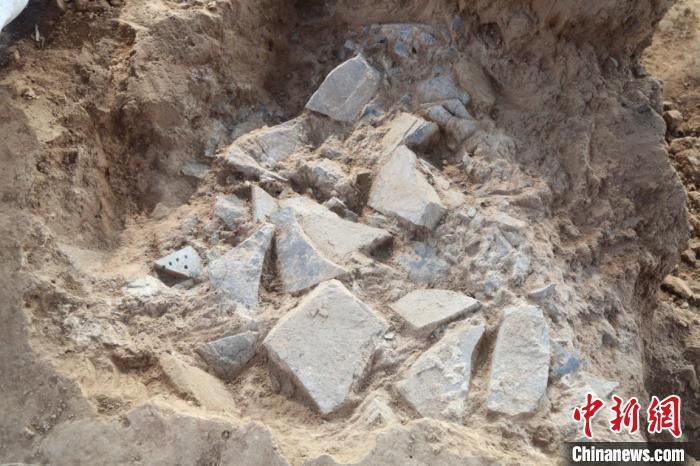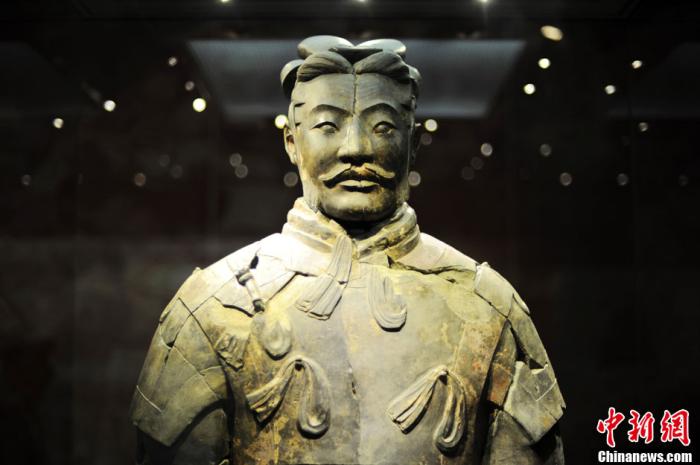What does it have to do with Terracotta Warriors and Horses?
BEIJING, Dec. 6 (Reporter Shangguan Yun) New discoveries have been made in the archaeology of the core protected area in Xianyang City, Qin Dou! Recently, the "First Discovery of the Stone Armor Processing Base of Qin Shihuang Mausoleum" was posted on the hot search: Shaanxi Institute of Archaeology found a hand-made place of stone armor in Qin Dynasty at the site of Xianyang City, Qin Dynasty.
This news attracted a hot discussion among netizens who ate melons: What are the uses of these stone armor? Does it have anything to do with the terracotta warriors and horses in Qin Shihuang’s mausoleum? According to Zhang Yanglizheng, assistant researcher of Shaanxi Archaeological Research Institute, these stone armor have nothing to do with the Terracotta Warriors. "There is a burial pit in the mausoleum of the First Qin Emperor, in which Stone armour is unearthed, which is similar to an armor warehouse."
New Discovery of the Core Reserve in Xianyang City, Qin Dou
Recently, Shaanxi Archaeological Research Institute released a major archaeological discovery: Archaeologists found the remains of stone armor in the core protection area of Xianyang City, Qin Dou, and some features are completely consistent with the stone armor unearthed from the Mausoleum of the First Qin Emperor.
It is understood that this newly discovered stone armor production site is located in the ruins of Gaotai building — — Located 500 meters north of the site of No.6 Palace in Xianyang Palace, Qin belongs to Yaodian Town, a new town in Qin and Han Dynasties, Xixian New Area.

The stone armor production site is piled up. Photo courtesy of Shaanxi Institute of Archaeology
Archaeologists found scattered stone nails in the surface grass here, and the stones are all cyan limestone. Part of the stone chips are close to the nail plate, the surface is polished, the rectangular hole is drilled, and the edges and corners are treated, especially in order to fit the human body curve, the stone chips are made into the shape of micro-drum on the front and micro-arc on the back.
Among them, some stones have words for a moment. These features are completely consistent with the stone armor unearthed from Qin Shihuang’s mausoleum. According to the shape, the stone pieces can correspond to different parts of the armor and the pocket (that is, the helmet) respectively.
During the excavation, the archaeological team also found ash pits, powder piles formed by grinding stone chips and other relics, as well as stones, blanks, waste products and chipped slag, copper bars and lead bars used for knitting stone armor, as well as tools such as iron cones, knives and grindstones.
The mysterious production place of stone armor
Undoubtedly, the discovery of hand-made remains of stone armor is of great significance. This is another major archaeological discovery after the discovery of the stone armor pit in the Mausoleum of the First Qin Emperor 20 years ago and the discovery of abandoned stone armor pieces in the Qin Dynasty water well north of mausoleum of the first qin emperor 18 years ago.
Xu Weihong, a researcher at Shaanxi Institute of Archaeology, said that in 1998, the burial pit of stone armor was discovered in the mausoleum of the First Qin Emperor, and a large number of stone armor and bags were unearthed.
But how and where they were made remained a mystery until one day three years later. In 2001, Liu Junfa, a farmer from xingfeng, Lintong, dug up a piece of gravel in his cotton field, which was very similar to Qin Ling’s armor.
The archaeological team seized this clue and found an abandoned Qin Dynasty water well in Changtiao Village, from which thousands of pieces of discarded stone armor pieces were unearthed, as well as several pieces of flat copper wire used to connect the armor pieces.
Most of these stone armor pieces are semi-finished, some are rough, and some have been polished and shaped, with the same texture and shape as the stone armor pieces unearthed in the stone armor pit of the Qinling Mountains. Experts judge that they were all abandoned due to quality problems when making stone armor.
theseDoes the stone armor have anything to do with the Terracotta Warriors?
Reminiscent of the armor worn by the Terracotta Warriors, some netizens began to wonder: Are those stone armor related to the Terracotta Warriors?

Data Map: The "general figurines" unearthed from the No.1 burial pit of Qin Terracotta Warriors and Horses were exhibited for the first time. China News Agency issued Bird photo
"They have nothing to do with the Terracotta Warriors. There is no stone armor on the terracotta warriors and horses, and their armor is a clay sculpture made together when making figurines. " Zhang Yang Lizheng introduced that only Stone armour was unearthed in the burial pit of Qin Shihuang’s mausoleum. "You can imagine that it is similar to an armor warehouse."
Zhang Yanglizheng explained that the mausoleum of the First Qin Emperor is a complex system. During the Qin and Han Dynasties, the funerary objects of the Mausoleum had a characteristic, that is, they brought all kinds of official institutions of the central government symbolically underground. "In other words, the burial pit in Stone armour may symbolize a part of the armory, because in real life, the Qin Empire should have an armory. It doesn’t have to be for whom to wear it or use it. "
The significance of this new discovery of stone armor. Zhang Yang Lizhen said, for example, first of all, you can understand the production process and flow of Stone armour at that time, as well as the production level and skills of handicrafts; Secondly, the internal connection between Xianyang City of Qin and the mausoleum of the First Qin Emperor is closer. "At that time, the official who made the royal funeral utensils should be Shaofu, and Shaofu, as one of the nine ministers, must be in the capital, and the made things will be buried with the emperor."
"Third, this discovery provides a new way of thinking for the functional changes of Bei Gong District in Xianyang City, Qin Province after Qin unified the whole country." Zhang Yang Lizheng explained that the workshop area is too close to the palace area, which may be due to the fact that after the unification of the whole country, the Qin Empire planned a new city in the south of Weihe River, centering on Afang Palace, and the function of the original Wei Bei Gong area was transformed into a government office area. (End)